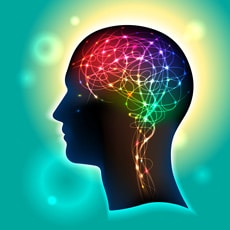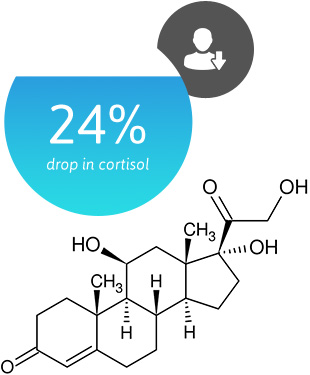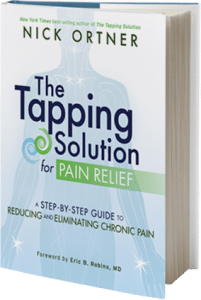If you're one of the over 100 million Americans suffering from chronic pain, or one of the millions of others suffering around the world, you've probably looked far and wide for a solution to give you relief.
Beyond the physical pain alone, physical pain puts tremendous limitations on our lives.
The American Association of Physicists in Medicine, through their research has stated the following about physical pain:

You see, when you're dealing with physical pain it limits your ability to live a full life.
You're constantly putting mental attention and energy towards dealing with the pain, holding you back from putting that attention and energy towards the things you want to do in life. Releasing your physical pain is about a heck of a lot more than just feeling better in your body. It's about giving you the freedom to live the life you want, how you want. But I'm here to tell you that...
Physical Pain Doesn't Need to Limit Your Life Any Longer...
 The simple technique known as Tapping that I'll share with you on this page, along with the specific process I've outlined for you, will allow you to finally get to the root cause of your physical pain and release it... permanently!
The simple technique known as Tapping that I'll share with you on this page, along with the specific process I've outlined for you, will allow you to finally get to the root cause of your physical pain and release it... permanently!
If you're somebody who's been suffering with physical pain for a long time, you're probably thinking that this sounds too good to be true, but I promise you that by the time you get to the bottom of this page, you'll have a totally new understanding of what's likely causing your pain, as well as a clear path to how you can release it.
You see, since 2004 when I first began my own Tapping journey, I've helped thousands of people release physical pain.
And every time I speak onstage, regardless of what continent I'm on, I ask who in the audience is experiencing chronic pain. Without fail, at least one-third of the people in the audience raise their hands. And none of these events are focused on physical pain or pain relief!
And thankfully, because of the effectiveness of Tapping, I am almost always able to bring pain levels down and bring instant relief to the people I work with, and oftentimes within just minutes.
Now if you're like most people in Western culture, the idea of having pain relief in minutes sounds almost too good to be true. The normal “solutions” we've been taught to seek out by doctors include things like surgeries, injections, and medications and none of them ever seem to have very fast or lasting results.
That's because...
Traditional solutions for pain relief completely miss the underlying causes of physical pain...
 Most doctors have a huge gap in their understanding of physical pain, and the solutions for creating lasting pain relief.
Most doctors have a huge gap in their understanding of physical pain, and the solutions for creating lasting pain relief.
What traditional doctors miss is the understanding of the role that our emotions, whether they be conscious or unconscious, play in our physical health. As the CDC itself has said,
"There's an emotional component in 85% of all illnesses."
You see, we all naturally feel negative emotions as a result of the many stressors and demands of everyday life. When these emotions build over time (especially with anger) and remain unexpressed, they can become buried in the unconscious mind.
As negative emotions accumulate over time, they develop into physical symptoms. Here's how it happens...
 Let's say, for example, that you went through a horrible divorce years ago. It needed to happen, and you now know you're better off as a result.
Let's say, for example, that you went through a horrible divorce years ago. It needed to happen, and you now know you're better off as a result.
You feel as if you're over it today, but, in fact, while the divorce was happening, your unconscious mind buried some very strong negative emotions without your realizing it. That's what the unconscious mind does — it takes over without our knowledge or consent.
Over time, those repressed emotions limit oxygen supply to your muscles. That oxygen deprivation then leads to muscle constriction, which spreads to nearby muscles. As time goes on, when your muscles remain tight and constricted, you experience pain.
Imagine if I asked you to clench your fist right now and keep it clenched. After a minute, your hand might get tired. After ten minutes, maybe your hand would ache, and then pain would set in. What would happen if you kept it clenched for a whole day, month, or year?
Obviously, you would experience pain, muscular degeneration, and all sorts of problems, not just in your hand, but in your wrist and arm, as well. Eventually your shoulder would be affected, and so on. Imagine the same thing happening in whatever part of your body is in pain. The tension builds, muscles contract, blood flow constricts, and pain follows, all because of unconscious emotions.
The negative emotions linked with your physical pain can be around a number of different events that have happened in your past or they can be around one particularly traumatic event, such as an accident that caused an injury...
Very often when I explain to people how our emotions cause physical pain, they'll tell me, "But I had an accident that caused a physical injury, how is that related to my emotions?"
What people so often overlook, is the emotions around the accident, such as the fear, hurt, or anger they experienced during the event, or the emotions they have felt since the accident, such as embarrassment around what happened, or fear of the pain not going away, or anger towards somebody that may have caused the accident.
All of these emotions play a huge role in locking in the physical pain of an accident, no matter how "physical" you may believe the accident to be.
Here's how Tapping works to release negative emotions locked in your unconscious mind, and thus release physical pain from the body...
So how does tapping figure into the science of pain and, more important, pain relief and the bodymind?
 There's a growing body of research on the topic.
There's a growing body of research on the topic.
In a double-blind study conducted by Dawson Church, Ph.D., tapping was shown to produce, on average, a 24 percent drop in cortisol after just one hour of tapping. During that same hour of talk therapy without tapping, participants showed a much smaller drop in cortisol levels.
Research has shown that acupuncture, and potentially acupressure, as well, provides pain relief by increasing endorphin levels in the body. Since tapping engages acupressure points while also lowering cortisol, it's likely that tapping, like acupuncture, allows the body to release the endorphins that then relieve pain.
In other cases, like in someone who experiences chronic pain but has no physical conditions or abnormalities, such as someone who has debilitating back pain but has no herniated discs or other abnormalities, the brain may be creating very real physical pain in the body without an obvious physical trigger.
Fortunately, a growing amount of research is giving us a better understanding of what pain is and how to relieve it.
The incredible results that tapping has on alleviating chronic pain may be explained, at least in part, by its ability to access what are called meridian channels.
While knowledge of these channels dates back to ancient Chinese medicine, it wasn't until the 1960s that these threadlike microscopic anatomical structures were first seen on stereomicroscope and electron microscope images. These scans showed tubular structures measuring 30 to 100 micrometers wide running up and down the body. Described in a published paper by a researcher named Kim Bonghan, they are also referred to as “Bonghan channels.” As a reference point, one red blood cell is 6 to 8 micrometers wide, so these structures are tiny!
You can think of meridian channels as a fiber-optic network in the body. They carry a large amount of information, often electrical and often beyond what the nervous system or chemical systems of the body can carry. By accessing these channels while processing emotions, thoughts as well as physical conditions like pain, tapping is able to get to the root cause of chronic pain more quickly than other approaches can.
Because tapping sends calming, relaxing signals directly to the amygdala, it may also help us to override the brain's negativity bias more rapidly. By using tapping to neutralize what it thought were threats to its survival, we're able to reprogram the brain to support more positive experiences, such as pain relief, pleasure, and relaxation.
How to Start Using Tapping to Relieve Your Physical Pain...
There are a few great resources that can help you in getting started using Tapping for Pain Relief:
Resource #1 - The Tapping Solution for Pain Relief Book: A Step-by-Step Guide to Reducing and Eliminating Chronic Pain
 If you're serious about wanting to eliminate physical pain from your body than this book is a must!
If you're serious about wanting to eliminate physical pain from your body than this book is a must!
In this book I'll guide you on a journey that begins on the surface - tapping to address the pain itself - and then we'll move together to the deeper issues that often affect pain, addressing emotional pain, underlying beliefs, trauma, and much more.
With easy to follow tapping scripts and exercises you'll know exactly what to do to get relief.
There are many ways that brain and body can create, increase, and prolong pain. After reading this book, you'll not only understand what's causing your pain but also how to achieve complete and lasting relief!
Go here to pick up your copy of this book today.
Resource #2 - Free Training
I'd love for you to join me on an upcoming free webinar presentation that I'm running on this topic. This is a content-packed webinar where I will take you, step-by-step, through the process of discovering the unconscious emotional and energetic causes of your physical pain and how to use the Tapping to eliminate them.
To learn more about the webinar and join me, click here.
.
.
I hope you take advantage of these two resources. I know they can help you.
If you have questions at any time please don't hesitate to ask. Just send me an email by clicking here. Or join me on Facebook here.
Until next time...
Keep Tapping!
Nick Ortner
What did you learn from this post? What questions do you still have? Post your comments below!
The blog post How to Use Tapping for Pain Relief was originally published to: The Tapping Solution's Blog
No comments:
Post a Comment